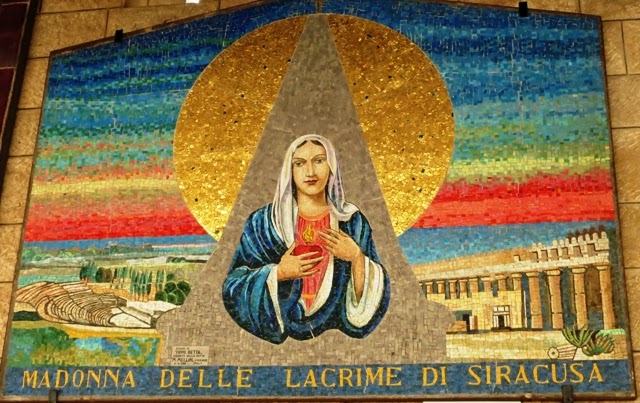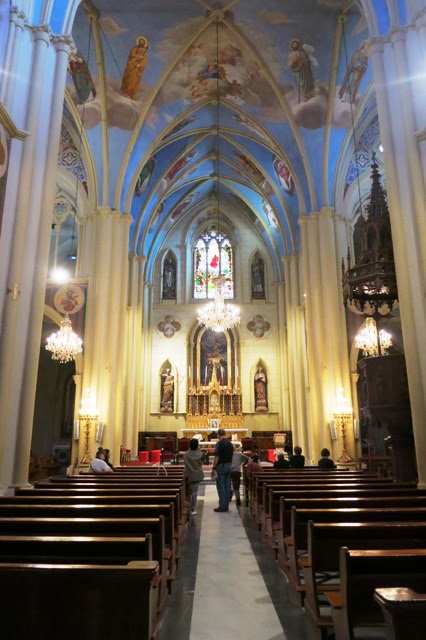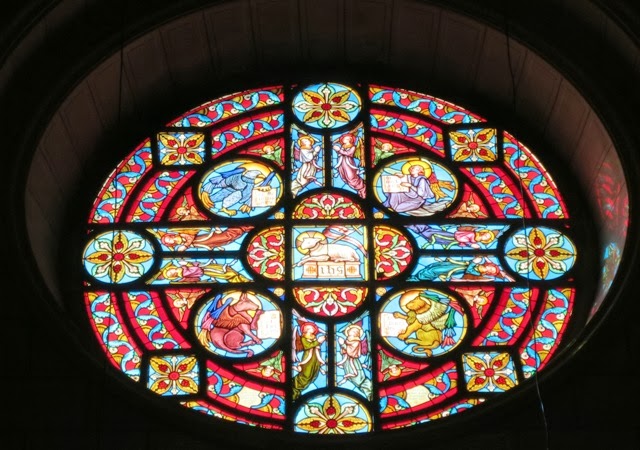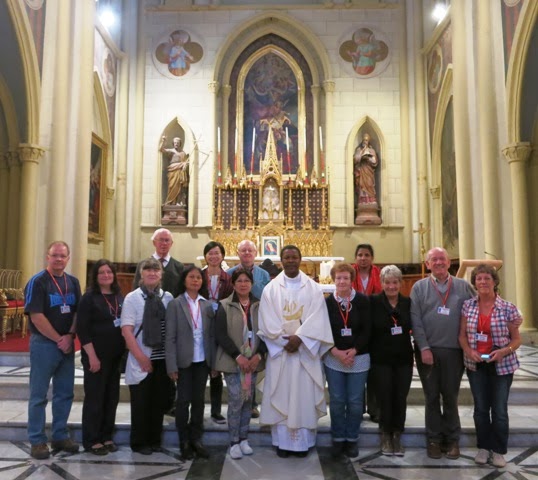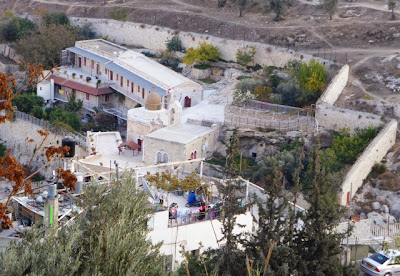The scheme uses a model
devised by the Christian charity Housing
Justice. This uses a minimum of seven churches, each church uses its own facilities
to house the homeless for one night before passing them on to the next church
which hosts them for the following night, and so on.
Sacred Heart Church in Hove
is the Tuesday night church for the Brighton & Hove shelter, and this is
the procedure we followed last night, which was our first night of the season.
 |
| The beds are ready |
My wife and I arrived a couple of hours before the volunteers to arrange tables and chairs, check food stocks, review health and safety and do the necessary administration. By 7.00pm the Evening Shift, a dozen volunteers, had arrived and they quickly set about their tasks, mainly cooking, setting tables, erecting beds, putting out fruit and newspapers, and making final preparations in the Parish Rooms before our guests arrive.
At 7.45pm there is a pause for a team
briefing, concluding with a moving prayer that ends with the words:
‘...Bless our working together this night,
Watch
over us all,
And
help us to pass on to our guests a true sense of their dignity
and
of Your loving care.
Amen.’
 |
| The kitchen starts to get crowded |
Between 8.00pm and 8.30pm our 15 guests arrive, usually tired, cold, hungry and often wet. They have been referred to the project by four agencies in Brighton & Hove that specialise in the homeless: Antifreeze; First Base; YMCA and the council’s Rough Sleeper Team. The Churches’ Project representative also undertakes a risk assessment interview with each candidate before a final selection is made.
Volunteers then greet the men, explaining how our church’s facilities operate, what the timetable for meals is, the entertainment available, smoking breaks and so on. Steaming cups of tea and coffee are gratefully received, bags unpacked, beds made and the men sit down and begin to relax.
At 9.00pm, we say grace together and then dinner is served; a constant stream of volunteers shuttles back and forth from our tiny kitchen balancing plates piled high with rice, chicken curry and vegetables, other carrying jugs of fruit juice or cups of tea. The meal is popular with quite a few requests for ‘seconds.’ Most of the volunteers sit down to eat with the guests and the conversation gathers pace.
Sometimes a little bit of personal history is shared, the football results are analysed, the weather prospects discussed, stories of housing or job experiences are related, a joke is told. Fr. Kevin is sitting beside a man who seems to be unburdening himself, a common experience. Then the pudding arrives, hot apple pie with custard or cream. One man at my table has three helpings and is sizing up a fourth when I get up from the table, another says he is too full to eat pudding but changes his mind. A debate begins on whether the pie is home-made, the opinion is that it’s too good to be shop-bought.
Two free cinema tickets have been donated. Determined to avoid any charge of bias I’ve written each man’s name of a scrap of paper, scrunched them up and put them in a bag. In front of the men I invite one of the guests, a middle-aged Polish man, to draw the first name. He reaches in, pulls out a paper, unfolds it – and yells with excitement! It was his own name. The room erupts with cheers and cat calls.
By 10.30pm the four Night Shift volunteers arrive. Lights out is at 11.00pm but by 10.00pm many of the men are asleep. They are simply exhausted and the luxury of a comfortable bed in a safe environment is to be enjoyed as much as possible.
The Evening volunteers depart and the Night Shift settle into its pattern of two-on, two-off. There are always two volunteers on duty, awake and alert, reading, listening to music, writing Christmas Cards (or poetry). The air is stuffy now, noisy with snoring, but peaceful.
At 6.00am we have returned to the church Parish Rooms with the six Morning Shift volunteers. The bleary-eyed Night Shift brief us before departing. They have switched the boiler on and soon breakfast is in full swing. Eggs and bacon, bacon rolls, cereal, toast, juices are laid out. The radio is switched on at 6.30am, letting the men know it is time to get up. They’re quiet, subdued; several read the newspapers over breakfast, others linger over a smoke, some just sit and think, mentally preparing for the day ahead. A couple of guys mentioned last night that they cannot afford the 50 pence subsidised meal that one of the city charities advertises, so we press then to take some sandwiches, a boiled egg, a cereal bar with them.
By 7.30am they have left. Most have helped us to load the van with the beds and bags ready for transport to the Wednesday night church which One Church, a Baptist church in the city centre. There are a flurry of “thank you’s” and the men are gone.
The remains of the meal are put away, chairs and tables stacked, toilets cleaned, floors hovered. By 9.00am we leave a tidy but very quiet Parish Room. In another week it will start all over again.
It’s been a privilege to operate the night shelter. Apart from the opportunity to fulfil the Gospel injunction to feel the hungry etc, there are a variety of other tangible and important benefits. We meet members from other churches and build bridges while working together. Our own volunteers enjoy a tremendous sense of espirit de corps, they often arrive early for shifts, work with tremendous goodwill and humour, and leave reluctantly; we only need about 20 staff to cover three shifts but we have 55 volunteers, so we operate two alternating shifts. It is also a great opportunity to relate to the homeless; no longer ‘invisible,’ they are transformed into personalities who could – but by the grace of God – be ourselves or our relatives. And it also makes us think about what we truly value and if we value things more than people...





